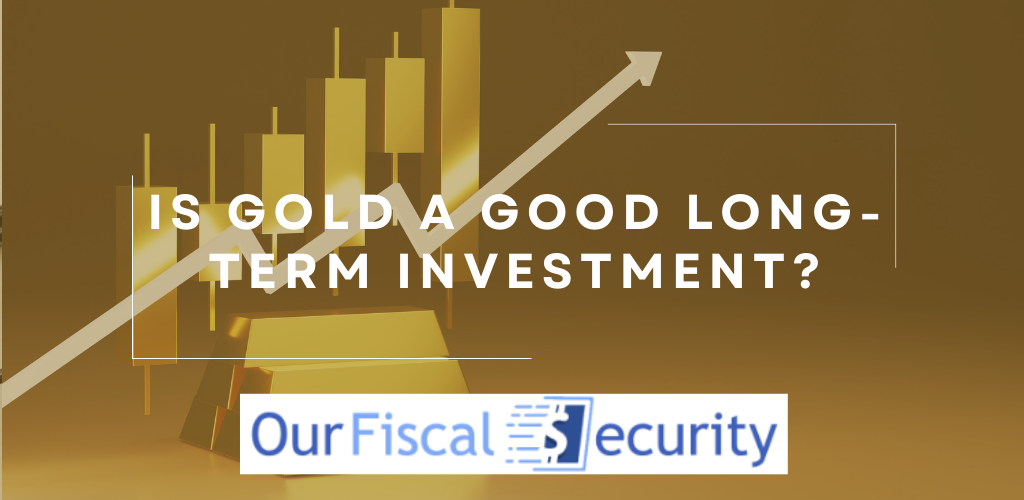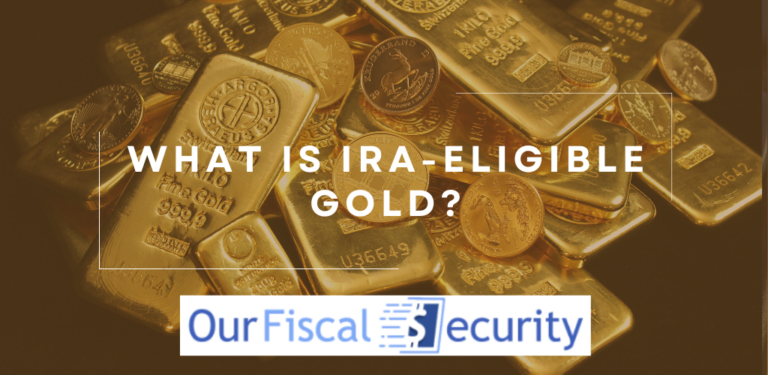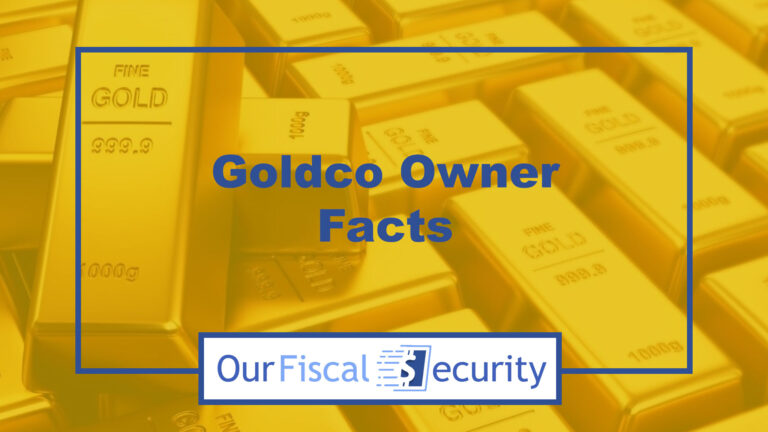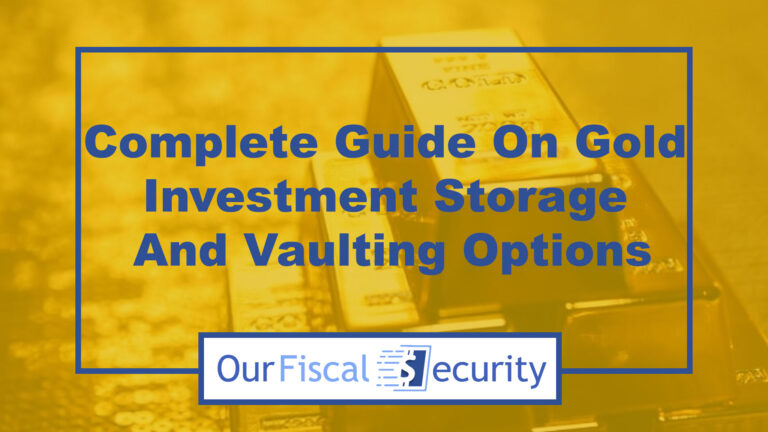Is Gold a Good Long-term Investment?
Gold has always been a fascinating topic for investors. Often seen as a safe haven, many wonder, “Is gold a good long-term investment?” Historically, gold prices have fluctuated because they’re sometimes influenced by economic and political factors.
This precious metal differs from other asset classes, such as stocks and bonds, often providing a hedge against inflation and adding diversity to investment portfolios.
It holds a unique position in the financial world, from physical gold in bars and coins to bullion and gold investments through funds. In this article, we will explore gold’s role in long-term investment strategies and its impact on an investor’s portfolio.

Understanding Gold as an Investment
Gold has been considered a precious metal for a long time, attracting interest from both investors and retail buyers. Its appeal is not just limited to its physical beauty but also the fact that it has a long history as a financial asset.
Let’s uncover gold’s role as a strategic asset and complex value dynamics, revealing why it’s more than just a shiny metal.
Gold: A Historical Perspective
Gold’s price history is a rollercoaster of highs and lows. Traditionally seen as a stable store of value, it has experienced significant price fluctuations over the years, often reacting to global economic and political changes. Its journey from ancient currencies to modern investment portfolios highlights its lasting appeal.
The Evolution of Gold Prices over the Years
Till now, the price of gold has seen dramatic shifts, influenced by numerous factors. From the Gold Standard era to the current market-driven pricing, this metal has transitioned through various phases.
Key moments such as the abandonment of the Gold Standard and the financial crisis of 2008 markedly impacted its prices, leading to significant peaks and troughs.
Performance Analysis: Gold as a Long-term Investment
Evaluating gold’s performance over the long term presents a mixed picture. While it has been a reliable inflation hedge, gold’s returns have sometimes lagged behind other asset classes, such as stocks.
Moreover, the World Gold Council notes that its value doesn’t just climb steadily but can fluctuate, impacted by global economic trends.
The Intricacies of Gold’s Value
Many factors influence the value of gold, ranging from economic trends to geopolitical events. Its price doesn’t just reflect market demand but also the broader economic environment, making its investment potential complex yet intriguing.
Impact of Economic Fluctuations
Economic factors such as interest rates, economic growth, and market crises significantly impact gold prices. In times of economic uncertainty or downturns, gold often sees a surge in value as investors seek safe-haven assets, contrasting with its performance during economic booms.
Influence of Political Instability
Political events and instability can drive investors towards gold. Uncertainties such as elections, geopolitical tensions, and policy changes often push gold prices higher as it’s seen as a more secure asset during unstable times.
Correlation with Inflation
Gold is renowned as an inflation hedge. Its value tends to increase when inflation rises, preserving purchasing power. This attribute makes gold a strategic asset for those looking to protect their wealth against the eroding effects of inflation.
Gold in the Investment Universe
In the diverse world of investments, gold holds a unique position. It’s not just another asset but a category of its own.
Comparing gold with traditional and modern investments such as stocks, bonds, and cryptocurrencies reveals its distinctive characteristics and benefits. Understanding its role can help investors make informed decisions about portfolio diversification.
Gold Vs. Traditional Investments: Stocks and Bonds
Several key differences emerge when comparing gold to traditional investments. Stocks and bonds are typically tied to the economic performance of companies and governments, offering potential dividends and interest payments.
Gold, however, doesn’t generate income in the same way. Its value is largely dependent on market demand and sentiment.
While stocks and bonds can offer growth and income, gold is often viewed as a secure asset in uncertain times, with its price often moving independently of the stock market. This distinction makes it an attractive option during periods of market volatility or economic downturns.

Gold Vs. Modern Investments: Cryptocurrency
Comparing gold with modern investments such as cryptocurrency reveals a variance between the traditional and the digital.
Cryptocurrencies, such as Bitcoin, offer digital scarcity and have been praised as “digital gold” for their potential to store value. However, they are relatively new and subject to intense volatility and regulatory uncertainties.
In contrast, gold has a centuries-long history as a store of value, with its price showing more stability compared to the often dramatic price swings in cryptocurrencies. Its physical tangibility also sets it apart from the virtual nature of cryptocurrencies.
The Role of Gold in Portfolio Diversification
In truth, incorporating gold into a diversification strategy can be a great move. Unlike paper investments, the value of gold often moves differently from that of stocks and bonds.
This lack of connection can help in balancing a portfolio, reducing the overall risk. Gold’s historical role as an inflation hedge can also protect purchasing power during times of rising prices.
Whether through owning tangible gold, coins, gold bars, or financial instruments such as gold IRAs and SPDR gold shares, including gold in a portfolio can offer a cushion against market fluctuations.
Additionally, this makes it a valuable asset for cautious investors aiming for a well-rounded investment approach.
Weighing the Pros and Cons of Gold Investment
Like any financial decision, investing in gold comes with its own advantages and challenges. Understanding these can help investors make informed choices.
The Upside of Gold Investment
Gold has been a highly prized asset for centuries, offering unique benefits in the world of investments. Its enduring value has made it a staple in investment portfolios across various economic cycles.
Gold as an Inflation Shield
A key advantage of gold is its ability to act as an inflation hedge. Historically, gold prices have risen when inflation rates climb, helping preserve the purchasing power of investors. This quality makes it a strategic asset in times of economic uncertainty.
Liquidity: Gold’s Key Advantage
One of the significant benefits of gold investing is liquidity. It can be easily bought and sold in various forms, such as gold bullion, coins, or bars.
This ease of converting gold into cash makes it an attractive option for investors seeking quick asset liquidation. The ability to quickly buy gold and sell when market conditions change is valuable for agile portfolio management.
Gold: A Safe Haven in Turbulent Times
Gold is often seen as a safe haven during market volatility. In turbulent times, investors tend to move their assets into gold, increasing its price.
This has been evident in past decades, where gold costs escalated during economic downturns, reinforcing its status as a stabilizing asset.
The safety of gold IRAs has been particularly noticeable in the past decade as global economic challenges have persisted.
The Downside of Gold Investment
While gold offers several benefits, it’s also essential to consider its disadvantages. These drawbacks need to be carefully weighed against potential gains, especially in volatile markets.
Dealing with Gold’s Volatility
Despite its safe-haven status, gold is not immune to volatility. Gold prices can fluctuate significantly, affected by global economic forces and currency values.
During periods when other investments might be stabilizing, gold’s volatility often becomes more pronounced, requiring investor awareness of potential short-term price swings.
Absence of Dividends: A Consideration
Unlike stocks, gold does not yield dividends or interest. This is a crucial factor to consider for those seeking regular income from their investment holdings.
Gold’s value lies in price appreciation, not in generating periodic income. Therefore, investors looking for regular income might find it less attractive compared to dividend-yielding stocks.
Navigating Storage and Security Challenges
Owning tangible gold, whether in the form of gold coins, bars, or bullion, presents storage and security challenges. Safekeeping this asset requires secure storage solutions, which can incur additional costs.
Investors should factor in these logistical aspects when considering a gold investment.
The How-to of Gold Investment
Gold investment offers various pathways, each with its unique characteristics and risks. Understanding these options can help investors align their gold investing strategies with their financial goals and risk tolerance. In our detailed guide on managing a Gold IRA, we cover all important aspects and factors such as custodians, fees, regulations, and taxes.

Investing in Physical Gold: A Tangible Asset
Investing in gold bullion, coins, or bars is an appealing option for many. It it’s important to note that gold is a tangible asset and investors can hold it, often seen as a symbol of wealth and stability.
Owning real gold can be satisfying, but it also involves considerations such as secure storage and insurance. The price of gold in this form can be influenced by market demand and scarcity.
While it lacks the income generation of dividends, it offers a physical hedge against inflation and currency devaluation.
Gold Stocks: An Indirect Investment Approach
Gold stocks represent shares in gold mining companies. Such an indirect approach to gold investing allows investors to gain exposure to this market without owning the physical metal.
Moreover, gold stocks’ performance is influenced by the price of this asset and the mining company’s operational efficiency and profitability.
This option can offer dividends and is easily traded, but it also comes with the risks associated with business performance and stock market volatility.
Gold ETFs: A Blend of Convenience and Exposure
Gold exchange-traded funds (ETFs) provide a blend of convenience and exposure to the gold market. These funds track the price of gold and offer a simple way to invest without the challenges of storing real gold.
Additionally, gold ETFs are popular among retail investors for their liquidity and ease of trading, similar to stocks. This investment option offers a practical way to diversify an investment portfolio. However, it may come with management fees and doesn’t provide physical ownership of gold.
Gold Futures: For the Risk-tolerant Investor
Gold futures are contracts to buy or sell a specific amount of gold at a predetermined price on a set future date. This form of gold investment is suited for more risk-tolerant investors, as it allows for leveraging investments, potentially leading to significant returns.
Regardless, the complexity and speculative nature of gold futures means they carry a higher risk, including the potential for substantial losses. It’s advisable to seek guidance from a financial advisor when considering gold futures as part of an investment strategy.
Gazing into the Future of Gold Investment
The future of gold investment is a topic of keen interest for both seasoned and new gold investors. It’s crucial to consider how trends and external factors might shape the landscape of this precious metal.
Long-term Outlook for Physical Gold
Physical gold has traditionally been a cornerstone of wealth preservation. The long-term outlook often hinges on its role as an inflation hedge and a stable asset class.
Historically, gold has maintained its value over extended periods, particularly in inflation-adjusted terms. As a tangible asset, physical gold’s appeal may continue due to its intrinsic value and finite nature.
However, the price of gold can be influenced by mining production, technological advancements in gold extraction, and changes in investor behavior.
Owning gold, whether as part of a gold IRA or through direct holdings, has been a good investment over the past decades, and this trend is likely to continue, albeit with the usual fluctuations inherent in precious metal markets.
Anticipating the Impact of External Factors on Gold
External factors, ranging from geopolitical events to global economic policies, significantly influence gold’s market dynamics. The price of gold has historically risen during times of political uncertainty or economic downturns as investors seek safe-haven assets.
Central bank policies, particularly those affecting currency values and interest rates, also play a crucial role in determining gold prices. In addition, technological advancements and shifts in the demand for gold, both for investment and industrial uses, could impact its future value.
As a result, gold investors need to stay informed and agile, adapting their strategies to align with these external influences. The ability to anticipate and react to these factors will be key in maximizing gold returns in the coming years.
Frequently Asked Questions
Navigating the world of gold investment can be complex. Here are some commonly asked questions by new and seasoned investors alike, providing clear, concise answers to help guide your gold investment journey.
Can I Invest in Gold Without Physically Holding It?
Yes, you can invest in gold without physically holding it. Options include gold ETFs (exchange-traded funds), gold mutual funds, and gold mining stocks.
These allow you to invest in gold as an asset class without the need for storage and security concerns associated with tangible gold holdings.
How Much Money Should I Invest in Gold?
The amount to invest in gold varies based on individual financial situations and investment goals.
A general rule suggested by financial advisors is to allocate around 5-10% of your investment portfolio to gold or other precious metals. This helps in diversification without overexposure to gold’s price volatility.
How Do I Start Investing in Gold?
To begin your gold investment journey, first decide on the form of investment (tangible gold, stocks, ETFs). Research the market and consult with a financial advisor to understand the nuances of gold investing.
Additionally, for material gold, look for reputable dealers, and for gold stocks or ETFs, you can invest through a brokerage account.
How Can I Buy Gold?
There are multiple ways to buy gold. You can buy real gold from trusted bullion dealers, mints, or banks. There is also an option of buying gold through an IRA.
Alternatively, you can use a brokerage account to invest in non-physical forms of gold, such as gold ETFs or stocks. It is essential to comprehend the costs and authenticity of the gold investment before making any purchase.
What Are the Potential Risks of Investing in Gold?
The potential risks of investing in gold include market volatility, where the price of gold can fluctuate significantly over short periods.
Gold does not yield dividends like some other asset classes, and it incurs storage and insurance costs. Additionally, gold’s performance can be influenced by various external economic factors.
Final Thoughts
Gold, a timeless precious metal, has maintained its allure over the past decades, offering a unique blend of stability and potential in a well-rounded investment portfolio.
While gold prices have seen ups and downs, choosing to hold gold, particularly in forms such as bullion, provides inflation-adjusted protection. Its performance, especially in uncertain economic times, underscores its role as a safe-haven asset.
As with any investment, there are considerations to weigh, such as market volatility and the absence of dividend income. Overall, buying gold can be a good investment strategy, especially when balanced with other assets, to achieve diversified financial health.







